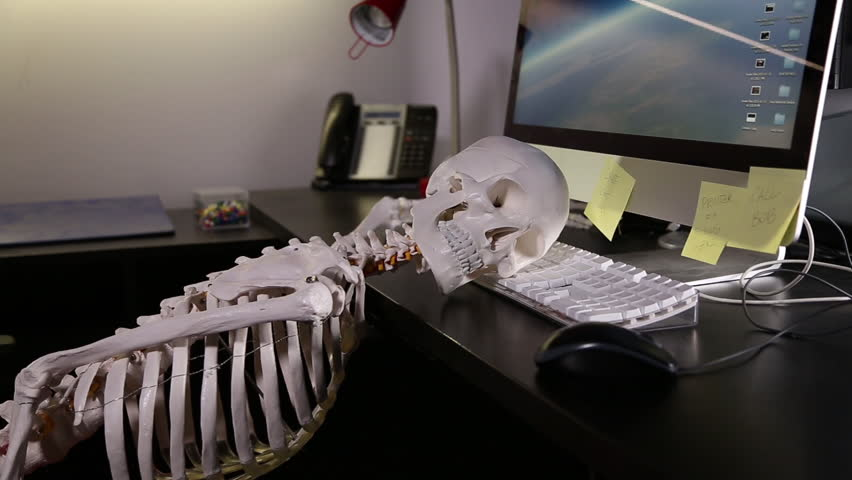Белая Получаем доступ к чужому крипто-кошельку blockchain.com и Atomic Wallet
Monetka787
Monetka787
Monetka787
1. Для начала нужно сгенерировать Mnemonic code ( Мнемоническая фраза восстановления — это список слов, в которых хранится вся информация, необходимая для восстановления биткойн-кошелька. Для этого нужно перейти на этот сайт — ТЫК , выбираем количество слов 12 и нажимаем на GENERATE:
2. Копируем полученную фразу и переходим по этой ссылке — https://login.blockchain.com/#/recover
3. Вставляем фразу в строку и нажимаем «CONTINUE»:
4. Вводим новые данные для кошелька и кликаем на «RECOVER FUNDS»:
5. Если всё сделали правильно, то должно появиться такое сообщение —
Через несколько секунд нас перекинет уже на сам аккаунт:
Сразу скажу что шанс получить аккаунт с балансом примерно 1% , поэтому чтобы увеличить шансы получения аккунтов с балансом, можно использовать софт, который будет делать всё автоматически и сохранять данные
от аккаунтов в txt формате —
- Первый софт
- Второй софт
- Если нет VPN, так как на сайт для скачивания он требуется.То можно с Яндекс скачать тут,я перезалил.(Скорость низкая у сайта,у Яндекс хорошая.)Это второй софт. https://yadi.sk/d/M6Z2Qtz9pd3FCQ Проверка второго софта на вирусы VirusTotal
Результат с софтом:
Скрин работы второго софта.Много вкладок не открываю,4-5 хватает.Зависит от мощности компа и интернета.
Первый софт не тестил.
Так же можно поставить на дедик и забыть,проверять изредко.
ВЗЛОМ Atomic Wallet
1. Также генерируем Mnemonic code и копируем его
2. Переходим в кошелёк (ПК или мобильное приложение Atomic Wallet) и кликаем на «RESTORE FROM BACKUP»:
3. В строку вставляем Mnemonic и нажимаем на «RESTORE»:
4. Придумываем новый пароль от кошелька и получаем доступ к аккаунту:
В мобильном приложении всё делается также —
Для повторного входа в кошелёк нужен тот же Mnemonic, который использовали для взлома и пароль который вы изменили. Софт для автоматического взлома Atomic Wallet не был найден
Источник
Bitcoin brute force seed
Bitcoin addresses bruteforce tool via GPU OpenCL
На написание данной программы автора вдохновил проект «Large Bitcoin Collider» https://lbc.cryptoguru.org целью которого позиционируется поиск коллизий хеша ripemd160 (hash 160), являющегося основой для вычисления адреса bitcoin кошелька. Т.е. предполагается, что существует по крайней мере 2^96 различных закрытых ключей, которые будут иметь одинаковый ripemd160 хеш и, соответственно, один bitcoin адрес.
Как это работает
Данное программноге обеспечение разработано как инструмент изучения аспектов безопасности применения эллиптических кривых на практике. Программа выполняет перебор закрытых ключей, вычисляет открытый ключ и на его основе хеш ripemd160, ищет вычисленный хеш в списке хешей существующих bitcoin адресов. Если будет найдено совпадение хешей, это означает что найден закрытый ключ к одному из указанных bitcoin адресов.
Для начала потребуется создать файл со списком хешей ripemd160 интересуемых bitcoin адресов в бинарном формате. Т.е. это файл, в котором подряд друг за другом записаны хеши интересуемых адресов в бинарном формате (20 байт на хеш). К данному проекту прилагается файл с хешами bitcoin адресов (файл bitcoin.bin).
Далее, следует запустить программу с указанием созданного файла хешей в качестве параметра (о параметрах запуска смотрите соответствующий раздел).
Если начальный закрытый ключ не задан, то он генерируется случайным образом. Из закрытого ключа вычисляется открытый ключ, а из него в свою очередь вычисляется хеш ripemd160 (более детально о вычислении bitcoin адреса из закрытого ключа можно почитать тут: https://en.bitcoin.it/wiki/Technical_background_of_version_1_Bitcoin_addresses), полученный хеш ищется в списке интересуемых хешей (если совпадение найдено, значит закрытый ключ найден, информация о находке будет выведена на экран и записана в файл found.txt в пвпку с программой), далее закрытый ключ инкрементируется на единицу и процесс повторяется.
Проведем синтетический тест, который более наглядно покажет работу программы.
Предположим, нас интересует несколько кошельков:
Private key: 6AA3789CFE067047480EED275D4A017B812D19AE6A4B82105E0B7DCEAF64A1B5
Public key: 0446C360263B1794E429E7D672A878B5083C37D6BA177BFB68405EED3DB01804A210BDFD925C8E2CD16C054C3919C6F0889376E96EDC6B2BAF5D06D8F139601268
Private key: 4C9FC687F5604F80F224BAC08999006E6967D5071331C121F503D8352556D61C
Public key: 045C6D700D71FD80E75AA4965DFB3B3398062B03DA419379F95F5C9DBF5E9AD8C2BD9FE30F4C46B24ADAB8CBEB2F4AC51002971EB45E7086822E14BC362BAAAACC
Сохраним хеши RIPEMD-160 в бинарном формате в файле «test1.bin»
Программу запускаем со следующими параметрами: ./oclexplorer -b ./test1.bin -k 6AA3789CFE067047480EED275D4A017B812D19AE6A4B82105E0B7DCEAF000000 -u
Через некоторое время работы программы, будет найдено совпадение вычисляемого хеша с одним из хешей, сохраненных в файле «test1.bin»
Результат поиска будет выведен на экран и сохранен в файл «found.txt»
TIME: 2018-01-25 16:03:42
TIME: Дата и время нахождения
PRIV: Найденный приватный ключ
PUBL: Публичный ключ
HASH: Хеш bitcoin адреса в формате RIPEMD-160
ADDR: Bitcoin адрес
SALT: Приватный ключ, от которого начались вычисления
OFST: Дельта между найденным и начальным приватными ключами
GPUH: Хеш bitcoin адреса RIPEMD-160, вычисленный на GPU, всегда должен быть равен HASH
Установка и настройка
Работоспособность тестировалась на ОС Gentoo, Linux Mint, Debian. Тестирование проводилось на видеокартах: Nvidia GTX 230, Nvidia GT 730, Nvidia GTX 1060, Nvidia GTX 1080 ti, Radeon RX 570. Для работы требуются установленные библиотеки OpenCL и OpenSSL с включенной поддержкой эллиптических кривых.
Отказ от ответственности
Автор не несет ответственность за последствия, вызванные использованием Вами данного программного обеспечения. Помните, что нахождение закрытого ключа bitcoin кошелька и присвоение находящихся на нем средств в зависимости от вашей юрисдикции может считаться кражей и поэтому является незаконным.
Если Вас заинтересовал данный софт, но Вам нужно его модифицировать или написать аналогичный, автор всегда открыт к сотрудничеству, почта для связи: svtrostov@yandex.ru
Если данное программное обеспечение помогло Вам, буду рад вашей благодарности:
Источник
How Hard Is It to Brute Force a Bitcoin Private Key?
Trying to crack a private key with a brute force attack is a bit like trying to count to infinity: the sooner you begin, the faster you’ll never get there. Despite being as next to impossible as impossible gets, using a brute force attack to crack a bitcoin private key remains an intriguing idea for many.
The Dream That Never Dies
For math geeks, key cracking is a question of statistical probability and for hopeless dreamers, a question of ambition. Long shots capture the imagination of simple mammalian minds, and for those who wish to rage against the odds, the lottery is a game for the faint of heart – the finest display of sheer dumb mathematical bravery is in trying to brute force Bitcoin.
On the Bitcointalk forum, a related thread from Jun 11, 2018, continues to garner replies to this day. In ‘BitCrack – A tool for brute-forcing private keys,’ board members disassemble the prospects of making a brute force breakthrough with software specially designed for that task, with the most sober minds strongly dismissing the quest as a wild goose chase.
An early response from user Coin-1 politely attempts to dissuade anyone from proceeding any further: “Let’s calculate how much time you need to crack one Bitcoin-address on your machine. You said that your performance is 9 million BTC-addresses per second, i.e. approximately 2 23 BTC-addresses per second. Thus the brute forcing will take 2 160-23 = 2 137 seconds! I guess it is more than septillion (10 24 ) years!”
On an ordinary computer, attempting to extract funds from a bitcoin wallet to which you didn’t have the key would be a fool’s errand. What if, however, you had a faster, better computer that could attempt many more keys per second – would the tough nut of Bitcoin be a little easier to crack?
The Scale of the Problem
The first step in overcoming a challenge is in quantifying it. To do that we must look at exactly how many potential keys exist. A private wallet key is simply a number between 1 and 2^256 and to brute force it all you need is to continue guessing until you hit the right number between 1 and 115 quattuorvigintillion.
That’s a hard number for the human brain to process, but to put it in perspective, it’s greater than the estimated number of atoms in the universe. At that scale, even the world’s fastest supercomputer – IBM’s Summit – if tasked with brute forcing Bitcoin would effectively take forever to break just one wallet, which would test the patience of even the most determined hacker.
Wallet Recovery
This sheer uselessness of brute force will dash the hopes of anyone who has ever lost their password or seed phrase and cannot recover their bitcoin, but for those in that very situation, all may not be lost. If you remember at least part of the password, a service such as Wallet Recovery Services may be able to assist. For most cryptocurrencies, however, you’ll need to trust the company with your full wallet. In the case of bitcoin and bitcoin cash, it is apparently possible to engage the service without handing over the full wallet.
If successful in cracking the wallet, a fee equal to 20% of the wallet’s holdings will be incurred, but it’s a no win, no fee endeavor. As always, it’s worth examining how the process works and doing your own research before deciding whether to engage these types of services.
Quantum of Solace
For some time now, quantum computing has been the great fear for the continued security and fidelity of Bitcoin, with cynics suggesting that private key cracking may be just around the corner. Recently those fears were stoked when Google announced it had reached “quantum supremacy,” completing a computation in just over three minutes that it claimed would have taken a conventional computer 10,000 years.
It was enough to spark debate in the crypto community, for whom quantum computing is a bogeyman trotted out at regular intervals to spread FUD. However, as sober heads including news.Bitcoin.com counseled, this was not the hammer blow promised.
Now, IBM have rubbished Google’s claims. While Google had stated it would take 10,000 years for a conventional computer to complete the computation, a recent blog post from IBM said: “We argue that an ideal simulation of the same task can be performed on a classical system in 2.5 days and with far greater fidelity.”
My one-sentence impression of recent quantum supremacy stuff so far is that it is to real quantum computing what hydrogen bombs are to nuclear fusion. Proof that a phenomenon and the capability to extract power from it exist, but still far from directed use toward useful things.
— Vitalik Non-giver of Ether (@VitalikButerin) October 24, 2019
John Devadoss, Head of Global Development for NEO, and a quantum computing authority, told news.Bitcoin.com: “The quantum computing bogeyman is a bit like the AI bogeyman. First, there are way too many snake-oil salesmen, even in academia, because they want funding for their labs. Second, whilst progress is being made, albeit in arcane niche focus areas, the impractically high error rates coupled with the research lab-like constraints implies that real-world usage is way off on the horizon, if at all.”
For now, at least, it seems that quantum computing has yet to make the necessary quantum leap forward to trouble Bitcoin’s encryption. Cryptocurrency holders should remain vigilant to security threats, but brute force attacks should not keep them up at night. Successfully completing the heist would take an eternity, and ain’t nobody got time for that.

Do you think quantum computing will eventually break Bitcoin? Let us know in the comments section below.
Disclaimer: This article is for informational purposes only. Neither the company nor the author is responsible, directly or indirectly, for any damage or loss caused or alleged to be caused by or in connection with the use of or reliance on any content, goods or services mentioned in this article.
Images courtesy of Shutterstock.
Did you know you can verify any unconfirmed Bitcoin transaction with our Bitcoin Block Explorer tool ? Simply complete a Bitcoin address search to view it on the blockchain. Plus, visit our Bitcoin Charts to see what’s happening in the industry.
Источник




















